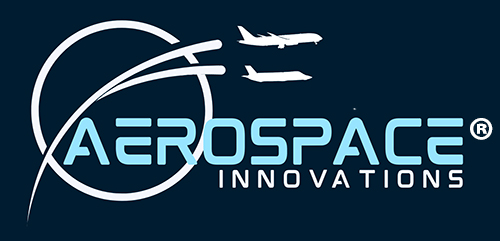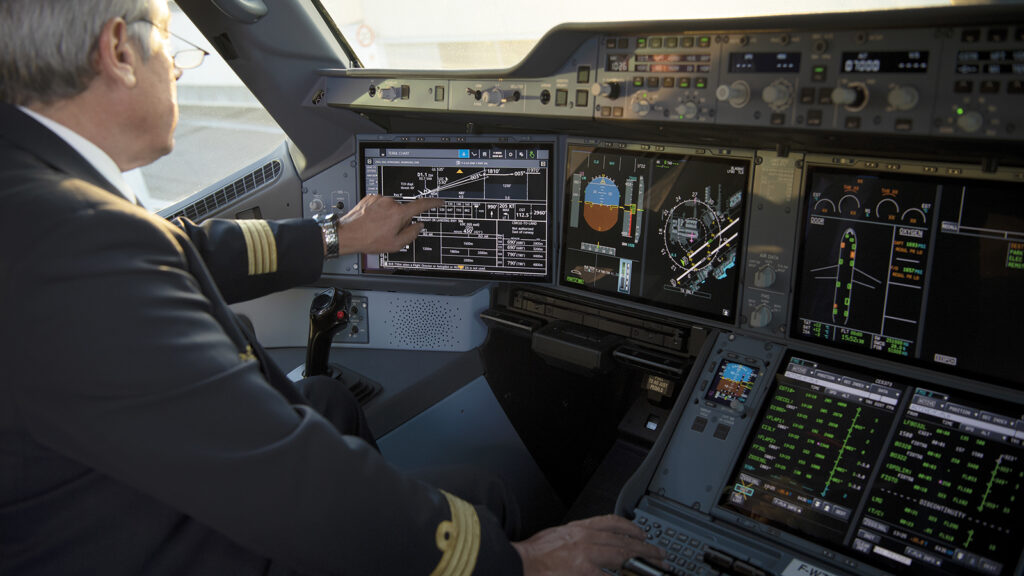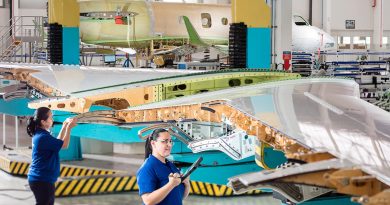Download Now
Aircraft data is generally assumed to be maintenance data but it is now being used increasingly across all aspects of an airline’s operations. Ian Harbison looks into how it is acquired, downloaded and processed.
Edward Gorman, Vice President, Engineering at Avionica, says there has a steady growth in the type and amount of data that can be downloaded from aircraft.
The Aircraft Condition Monitoring System (ACMS) and Aircraft Communications Addressing and Reporting System (ACARS) are the primary data sources for operational awareness, fault detection, and predictive maintenance. usage for operational and maintenance reporting. In addition, there is the (Flight Data Recorder (FDR) , mandated by regulation; and limited to post-event recovery and fixed parameter sets; the Quick Access Recorder (QAR), defined by the OEM and used by operators for routine analysis but often lacking completeness; and the Defined Access Recorder (DAR), a QAR derivative, modified by large airlines to meet custom needs but often cost-prohibitive for smaller carriers (for example, more than $100,000 to add high precision GPS).
The growth in the amount of data is exemplified by the Boeing 737 NG and the MAX, the latter generating eight times more ACARS traffic and QAR data.
One restriction to downloading more data is ARINC 717, which is limited to around 256 words per second (WPS), reducing resolution and analytical depth. It provides no support for integration or timing alignment with modern data buses such as ARINC 429, Ethernet, or other digital sources. He explains that Avionica’s approach bypasses this limitation by capturing data using ARINC 429 at its native speed and timing of 8,192 WPS. This ensures complete and accurate capture and exact timing. This done without modifying the existing ARINC 717 wiring or architecture. After download, the data is delivered to the customer in ARINC 717 format for ease of use.
He says all recording starts with the DAU but OEMs are trying to lock down the documentation that controls inputs to it. In addition, where airlines could previously select their own supplier, the OEMs are pushing them towards a single supplier. In the case of Airbus, there is a data output channel that only goes into the Ground Flight Operations & Maintenance Exchanger (FOMAX) from Collins on A320 and A330 aircraft. This part of the aircraft manufacturer’s Skywise data analytics service.
All aircraft data originates from centralised units: such as the Data Acquisition Unit (DAU), (Flight Data Acquisition Unit (FDAU) and Flight Data Interface Management Unit FDIMU). He says OEMs are increasingly restricting access to documentation, parameter definitions and third-party access, .steering airlines into closed ecosystems with mandatory single suppliers. For example, Airbus routes key outputs into the Ground Flight Operations & Maintenance Exchanger (FOMAX) from Collins on A320 and A330 aircraft. FOMAX (Collins), which only connects to the aircraft manufacturer’s Skywise data analytics service, blocking integration with alternate platforms. This has created what Gorman describes as a “data gold rush”, with OEMs and platform providers racing to control analytics value chains, not to create open ecosystems. He says this behaviour prioritises commercial monetisation over operational flexibility and undermines airline autonomy in managing safety and performance due to data bottlenecks and integration barriers.
He also points out that that the OEMs’ have a poor track record in keeping up with rapidly changing progress. Boeing still ships legacy Wi-Fi systems on the 787 platform while Airbus was delayed in transitioning connectivity on the A350 from 3G to newer standards, with many operators having to revert to manual processes.
In contrast, Avionica is vertically integrated and has a Hardware-as-a-Service (HaaS) business model. It actively engages with third-party partners to integrate customer-requested applications and services. These are standardised and repeatable, which accelerates deployment for new customers with similar needs. This focus on service promotes continuous improvement, with development driven by customer feedback.
In summary, he says, the OEMS work at the speed of aviation, not at the speed of technology.
Avionica has cybersecurity certifications that allow it to link to other systems in the cabin for real time monitoring, with several customers showing interest and a possible product launch next year.
Engines are the most important application. It will be offering bespoke integration. That means additional ARINC 429 ports and outputs can be added but the data is delivered to customers in their preferred format, again providing freedom from OEM dominance. Eventually, he would like to see an FDAU/FDIMU that acts as a comprehensive data source and forwards all content to an Avionica aviONS onboard network server.
The company also has a partnership to develop live telemetry streaming for operational analytics and predictive systems.
The company serves the commercial, regional and business aircraft markets. Commercial has the biggest fleets, so there is more competition, but operators are looking for cost-effective and flexible alternatives to legacy OEM systems. Regional carriers operate like commercial airlines but face tighter cost constraints. They often fly aircraft that share avionics with business jets, creating synergy for tailored solutions. For business jet operators, availability is paramount as downtime is expensive and unacceptable to the owners, who invest in reliability and low-footprint upgrades.
Murray Skelton is VP Weather Solutions and Business Development at FLYHT Aerospace Solutions. In December 2024, the Calgary-based company was acquired by Firan Technology Group Corporation, an aerospace and defence electronics product and subsystem supplier.
The company’s’ Automated Flight Information Reporting System (AFIRS) has been around for about 20 years, and can use 5G and satcom for download, along with backwards compatibility with 3G and 4G/LTE. Three years ago, it was a pioneer of edge computing with the introduction of AFIRS Edge.
He says there are two types of data. ACMS/AMH data needs to be offloaded quickly and acted on and then there is the huge amount of routine data that can analysed with AI or algorithms for predictive maintenance. Cost is the barrier to downloading this in flight, he also says, so cellular is the cheapest way to do this and 5G is the most effective and will be around for some time – AFIRS can offload terabytes of data within seven minutes of landing.
He says ACMS software is extremely difficult and expensive to change on an aircraft as it is controlled by the OEM, and also very expensive to purchase, along with need for experienced personnel to use it. AFIRS Edge can be loaded remotely across an entire fleet. It can also be used to monitor a specific problem. For example, LEAP engines need to run for three minutes before shutdown. If there is a rise in engine problems, it is easy to remotely ask the ACMS to download whether the pilots followed the rules.
He compares AFIRS Edge to Amazon’s Alexa – a small local unit that can connect to the whole of Amazon Web Services, which is constantly evolving, developing new capabilities. For AFIRS Edge, the equivalent is the development of extremely complex rules that select the data parameters to be recorded and how the data can be used most effectively for problem solving. This is important, he says, it is the quality of the data, not the quantity, that now makes it a differentiator between airlines – those with fewer technical delays and cancellations because they can pre-empt problems have a competitive advantage in terms of costs savings and, of course, passenger loyalty.
An ARINC 717-standard Data Acquisition Unit (DAU) is used to collect the information from all the aircraft systems, including the flight data recorder, which is then fed to the QAR. Within those data streams, there are different levels, depending on the DAU software and the age of the aircraft. For a Boeing 737, it is maybe a few hundred parameters, measured a few times a second. For a Boeing 737 MAX, it is tens of thousands of parameters being measured up to 40 times a second. It is the same data but the higher sampling rate means there is less chance that something significant will be missed.
Airlines want more data for their AI and predictive maintenance models, indeed, need more data, to make the models work more effectively. Interestingly, engines, perhaps the most complex components, are not monitored by the QAR. Instead, huge amounts of data are downloaded at regular intervals for analysis. AFIRS EDGE has additional ports beyond ARINC 717, so could be used to record performance in real time for download at the end of the flight. This could be used by the models. Early detection of performance degradation or impending failures seem to offer enormous potential benefits.
Another reason for some airlines being interested in this is their own very capable and experienced engineering teams – they do not want to be beholden to the OEMS, he explains, although in some cases the data is shared by both sides but used differently.
If the airline wants to pay for it, it is possible to send short message bursts to report location and altitude, engine temperatures, fuel load, fuel burn, as well as any exceedances that might occur – essentially inflight telemetry.
He adds that AI is going to make a huge difference, although it is still very early days. In a demonstration last year, he used it to determine heavy landings by four aircraft at three Canadian airfields. Having been fed invented weather conditions, the AI predicted one heavy landing (about the law of averages). The next step was to add data about previous heavy landings at the airfields, which resulted in a forecast of two events at an airport that was known to have wind shear issues at certain times. Adding more extreme weather data produced a prediction of five heavy landings, all at the affected airfield.
Another likely AI application is in other of company’s products, such FuelSense, which analyses flight data based on eight industry recognised fuel savings initiatives that include: Single Engine Taxi, Reduced Flap Takeoffs, Reduced Acceleration Altitude, Low Drag Approaches, Reduced Flap Landings, Idle Reverse, and APU Monitoring. It compares how the aircraft was flown to how it could be flown in order to maximise efficiency and fuel savings.
However, he comments that moving more computing capacity and AI is unlikely to happen in the foreseeable future because AI results are undeterminable, so will not be permitted by the regulatory authorities.




